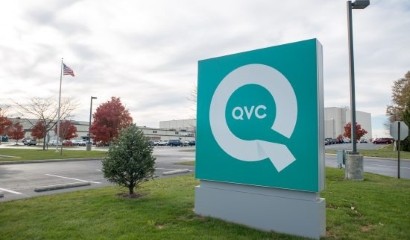WeWork Plan Profile
WeWork, Inc and its affiliated Chapter 11 debtors (collectively, the Company) filed a Chapter 11 plan and disclosure statement that are based on a restructuring support agreement (RSA), pursuant to which the debtors, the SoftBank Parties,[1] which collectively hold a majority of the debtors’ equity and certain positions in the prepetition notes, an ad hoc noteholder group holding approximately 87% of the debtors’ Series I first lien notes (1L Notes) and second lien notes (2L Notes), and Cupar Grimmond, LLC, which holds a mix of equity and prepetition notes, have agreed to support a Chapter 11 plan. The plan will equitize the Company’s 1L Notes, 2L Notes, and the letter of credit (LC) facility and reduce its over USD 4bn in prepetition funded debt by approximately USD 3bn. The following table provides a summary of the Company’s prepetition funded debt.
In total, approximately 92% of holders of the Company’s secured notes support the restructuring proposed in the plan, which would equitize holders of the 1L and 2L Notes and potentially wipe out general unsecured creditors, as well as unsecured noteholders and holders of the third lien notes (3L Notes).
Restructuring transactions
To fund the Chapter 11 cases, the debtors obtained debtor-in-possession (DIP) financing in the form of a senior secured, first priority cash collateralized first out LC facility in an aggregate amount not to exceed USD 650m (DIP LC Facility) and a first priority last out term loan C facility in an aggregate principal amount of approximately USD 671.2m (DIP TLC Facility). The plan contains additional terms referencing a DIP new money facility, which has not been the subject of a motion seeking court approval. The terms are in brackets and appear to be placeholders in the event that the debtors enter into such a facility. Adam Neumann, Third Point and other capital providers have reportedly been considering making an offer to purchase the Company, but nothing to this effect has been reported in court documents.
As part of the restructuring, the reorganized WeWork will issue common stock or other equity interests on or after the plan’s effective date (New Interests). Also, on the effective date, if the debtors, the SoftBank Parties, and the Required Consenting AHG Noteholders[2] (collectively, the Required Consenting Stakeholders) agree that entry into “Exit Facilities” is necessary and advisable, the reorganized debtors will enter into such Exit Facilities on the terms set forth in the applicable exit facility documents. The Exit Facilities include the “Exit LC Facility[, the Exit New Money Facility (if any),] and the Exit TLC Facility.”[3] The Exit TLC Facility refers to an exit term loan facility with the Softbank Parties acting as lenders thereunder. Like the DIP new money facility, the “Exit New Money Facility” is contained within brackets in the Chapter 11 plan.
The plan further provides that, if the debtors and the Required Consenting Stakeholders determine that additional funding is necessary or desirable, the debtors will distribute subscription rights to rights offering participants and that the rights offering (if any) will be conducted and consummated in accordance with the rights offering documents (if any).
Recoveries
In terms of recoveries, a unique feature of WeWork’s plan is that it classifies certain claims of DIP lenders. The portions of the DIP claims that are classified are impaired, and therefore the DIP lenders are entitled to vote those claims. Specifically, DIP lenders’ claims for fees and expenses under the DIP TLC Facility, including professionals’ fees (DIP TLC Fee Claims) are not classified under the plan. Lenders holding these claims will receive their pro rata share of the loans under the Exit TLC Facility on a dollar-for-dollar basis on account of such claims.
Drawn and undrawn DIP TLC claims, on the other hand, are placed in two separate classes under the plan. Drawn DIP TLC claims are further broken down into two categories: (i) Rolled Drawn DIP TLC Claims, which refer to the initial drawn DIP TLC up to an aggregate amount not to exceed USD 100m; and (ii) Equitized Drawn DIP TLC Claims, which are the amount of drawn DIP TLC Claims equal to the total amount of drawn DIP TLC claims minus the Rolled Drawn DIP TLC Claims. The former will be converted into Exit TLC Facility claims on a dollar-for-dollar basis, while the latter will receive a percentage of New Interests equal to: (i) the amount of Equitized Drawn DIP TLC Claims divided by the sum of total 1L Claims, Equitized Drawn DIP TLC Claims, and Adjusted 2L Notes Claims[4] and (ii) multiplied by 2, such percentage subject to dilution by the management incentive plan (MIP) and the “New LC Equity Allocation” (Drawn DIP TLC Equity Distribution). The New LC Equity Allocation refers to New Interests equal to 1.25% of the total New Interests.
Similarly, the Undrawn DIP TLC Claims are also divided into two categories: (i) Excess DIP TLC Claims, which include the portion of the DIP TLC Claims in an amount equal to the DIP TLC Claims minus the Drawn DIP TLC Claims minus the Rolled Undrawn DIP TLC Claims; and (ii) Rolled Undrawn DIP TLC Claims, which refer to the portion of the DIP TLC Claims in the amount required to cash collateralize (in accordance with the DIP LC/TLC Credit Agreement) the aggregate face amount of DIP LCs that are undrawn as of the plan’s effective date.
The Excess DIP TLC Claims will be paid in full in cash, while the Rolled Undrawn DIP TLC Claims will be converted into the Exit LC Facility. For this portion of the Undrawn DIP TL Claims, the DIP lenders will also receive their pro rata share of the New LC Equity Allocation.
Although separately classified, holders of 1L Notes claims and prepetition LC Facility claims will receive the same distributions, which will be their pro rata share of the percentage of New Interests equal to (a)(i) Total 1L Claims divided by (ii) Total 1L Claims plus Adjusted 2L Notes Claims multiplied by (b)(i) 100% of the New Interests minus (ii) the Drawn DIP TLC Equity Distribution, subject to dilution by the MIP and the New LC Equity Allocation (1L Equity Distribution).
The claims of holders of the 3L Notes will be discharged without a distribution except to the extent that the claims are under-secured and the debtor against which the claims are allowed has unencumbered assets, in which case creditors will receive their pro rata share (together with holders of allowed unsecured notes claims and general unsecured claims against such debtor) of the liquidation value of those assets. Likewise, holders of unsecured notes claims will only see a recovery if the debtor against which the claims are allowed has unencumbered assets, in which case unsecured noteholders will receive their pro rata share (together with holders of allowed 3L Notes claims and general unsecured claims against such debtor) of the liquidation value of those assets. General unsecured creditors will receive the same treatment. Accordingly, these three classes of creditors will only be permitted to vote on the plan if there are unencumbered assets available for distribution. Otherwise, they will be deemed to have rejected the plan.
Lastly, holders of interests in WeWork Inc will be wiped out except as otherwise provided in the restructuring transactions exhibit, which will be filed as an exhibit to a plan supplement, with the consent of the Required Consenting Stakeholders.
Additional plan provisions
The New Board will be appointed on the plan’s effective date, and will be composed of seven directors, including (i) three members appointed by the SoftBank Parties, (ii) two members to be appointed by the Required Consenting AHG Noteholders, (iii) one independent member appointed as set forth in the Corporate Governance Term Sheet, and (iv) the Chief Executive Officer.
In terms of releases, the plan contains customary non-debtor releases including releases for the Consenting Stakeholders, DIP Lenders, and the UCC and its members, among others.
Judge John K. Sherwood of the US Bankruptcy Court for the District of New Jersey has not yet scheduled a hearing to consider approval of WeWork’s disclosure statement.
Prior to joining Debtwire, Sara was a law clerk to two judges in the United States Bankruptcy Court, S.D.N.Y. and practiced in the Financial Restructuring Group at Clifford Chance, where she represented financial institutions (as secured and unsecured creditors, defendants in adversary proceedings, and participants in DIP financings) in high-profile restructurings. She also represented foreign representatives in Chapter 15 cross-border cases.
Any opinion, analysis or information provided in this article is not intended, nor should be construed, as legal advice, including, but not limited to, investment advice as defined by the Investment Company Act of 1940. Debtwire does not provide any legal advice and subscribers should consult with their own legal counsel for matters requiring legal advice.
———-
[1] The Softbank Parties include SoftBank Vision Fund II-2 L.P, SB Global Advisers Limited, SVF II Aggregator (Jersey)LP, SVF II GP (Jersey) Limited, SVF IIWW (DE) LLC, and SVF II WW Holdings.
[2] The RSA defines Consenting AHG Noteholders as the holders (or beneficial owners) of, or investment advisors, sub-advisors, or managers of funds or accounts in their capacities as holders (or beneficial owners) of, (a) the 1L Series 1 Notes and (b) the 2L Secured Notes, in each case that have signed on to the RSA. The Initial Consenting AHG Noteholders are those Consenting AHG Noteholders that were initially parties to the RSA on its effective date. Required Consenting AHG Noteholders means (i) at least two unaffiliated Initial Consenting AHG Noteholders, holding at least 50% of the aggregate outstanding principal amount of Secured Notes Claims that are held by the Initial Consenting AHG Noteholders, (ii) if there are not at least two unaffiliated initial consenting AHG Noteholders holding at least 50% of the aggregate outstanding principal amount of Secured Notes Claims that are held by the initial consenting AHG Noteholders, then initial consenting AHG Noteholders holding at least 50% of the aggregate outstanding principal amount of Secured Notes Claims that are held by initial consenting AHG Noteholders, or (iii) if there are no Initial Consenting AHG Noteholders party to the RSA, Consenting AHG Noteholders holding at least 50% of the aggregate outstanding principal amount of Secured Notes Claims that are held by Consenting AHG Noteholders (as defined in the RSA).
[3] Brackets included in the original.
[4] Adjusted 2L Notes Claims means the total aggregate amount of 2L Notes Claims excluding any postpetition interest or fees multiplied by 70%.
















